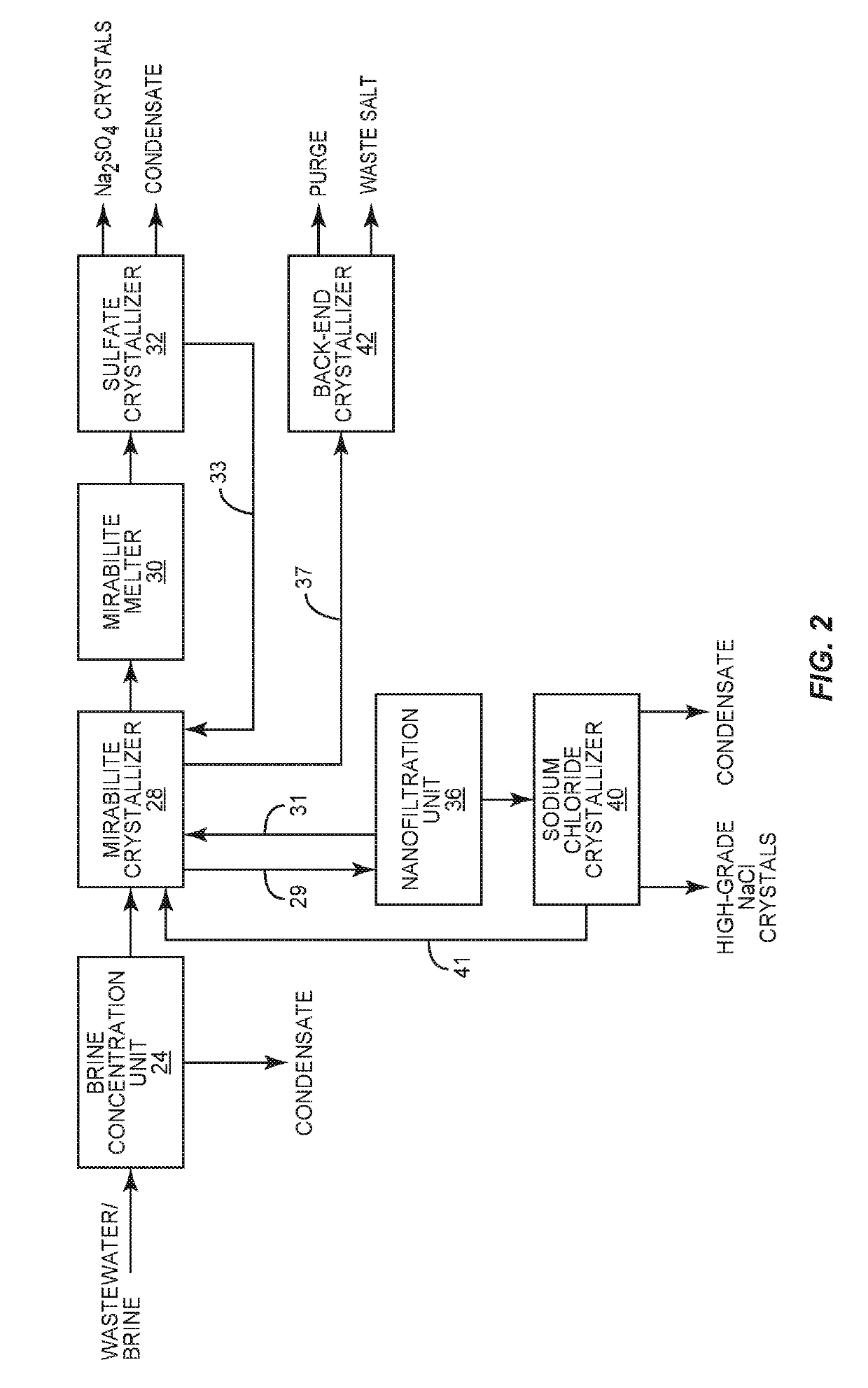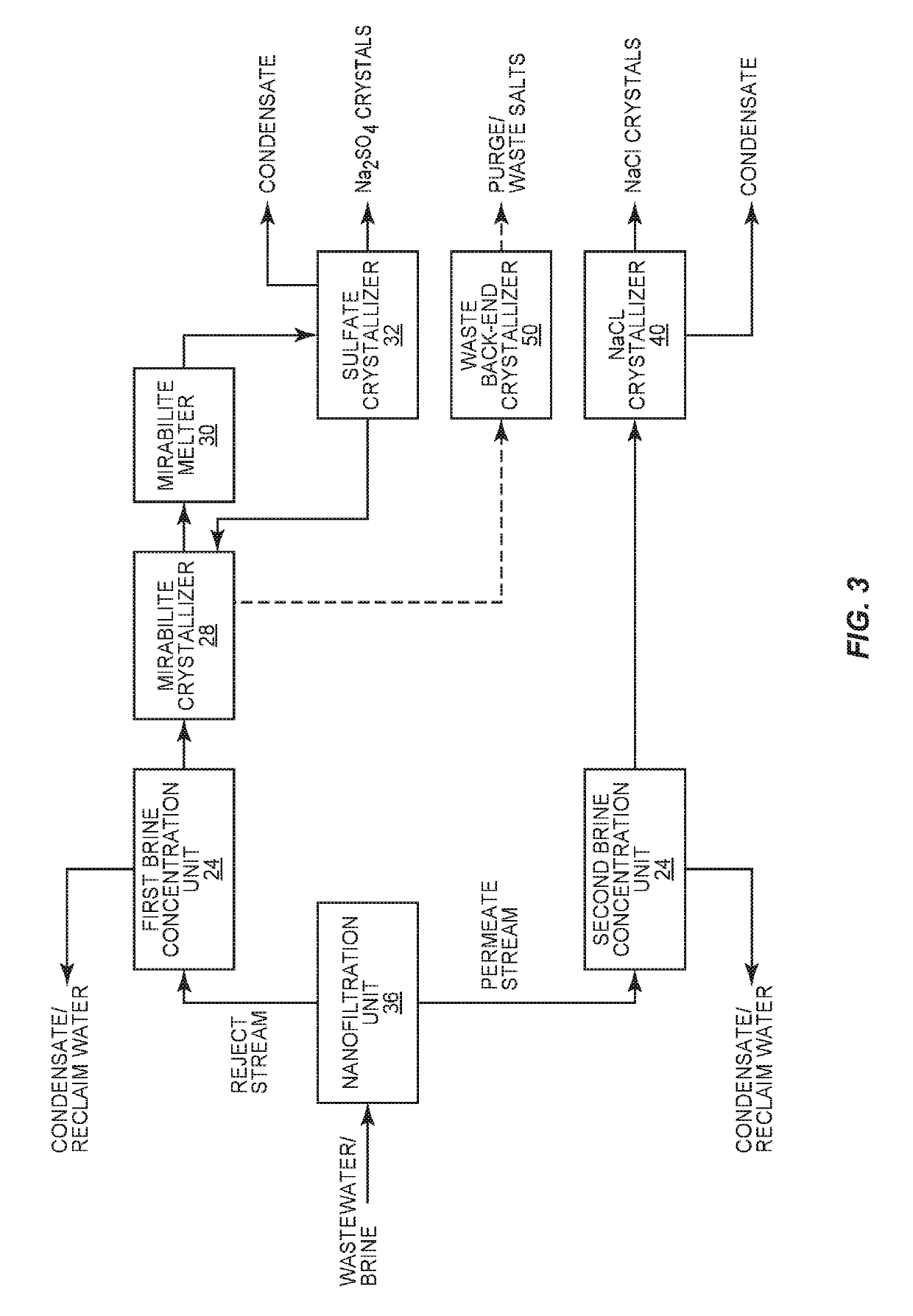Enhanced process for selective salt recovery from wastewater, waste salts, and brines
a technology for selective salt recovery and wastewater, applied in the direction of separation process, multi-stage water/sewage treatment, nature of treatment water, etc., can solve the problems of difficult or problematic disposal of contaminated wastewater, mixed salts are often subject to strict regulations, etc., to facilitate hydrated salt crystallization, increase operating temperature, and enhance sulfate depletion
- Summary
- Abstract
- Description
- Claims
- Application Information
AI Technical Summary
Benefits of technology
Problems solved by technology
Method used
Image
Examples
Embodiment Construction
[0015]The present invention entails a process for recovering high purity or commercial purity saleable salts from wastewater, waste salts, naturally produced brines and processed brines. The process removes desirable salts such as sulfate and chloride salts. As discussed below, the system and process includes a nanofiltration membrane unit operatively associated with other types of process units, such as salt crystallizers, that make up a salt recovery system with enhanced performance.
[0016]One embodiment of the present invention is shown in FIG. 1. Here a wastewater stream, such as a brine feed, is directed to a brine preparation process 35. As used herein, the terms wastewater stream, waste brine stream, and brine feed are all meant to mean a waste stream and are used interchangeably herein. Brine preparation process 35 can vary depending on the nature of the wastewater or brine feed and the aim of the process as a whole. For example, in some cases the brine preparation process 35...
PUM
| Property | Measurement | Unit |
|---|---|---|
| temperature | aaaaa | aaaaa |
| purity | aaaaa | aaaaa |
| operating temperature | aaaaa | aaaaa |
Abstract
Description
Claims
Application Information
 Login to View More
Login to View More - R&D
- Intellectual Property
- Life Sciences
- Materials
- Tech Scout
- Unparalleled Data Quality
- Higher Quality Content
- 60% Fewer Hallucinations
Browse by: Latest US Patents, China's latest patents, Technical Efficacy Thesaurus, Application Domain, Technology Topic, Popular Technical Reports.
© 2025 PatSnap. All rights reserved.Legal|Privacy policy|Modern Slavery Act Transparency Statement|Sitemap|About US| Contact US: help@patsnap.com



